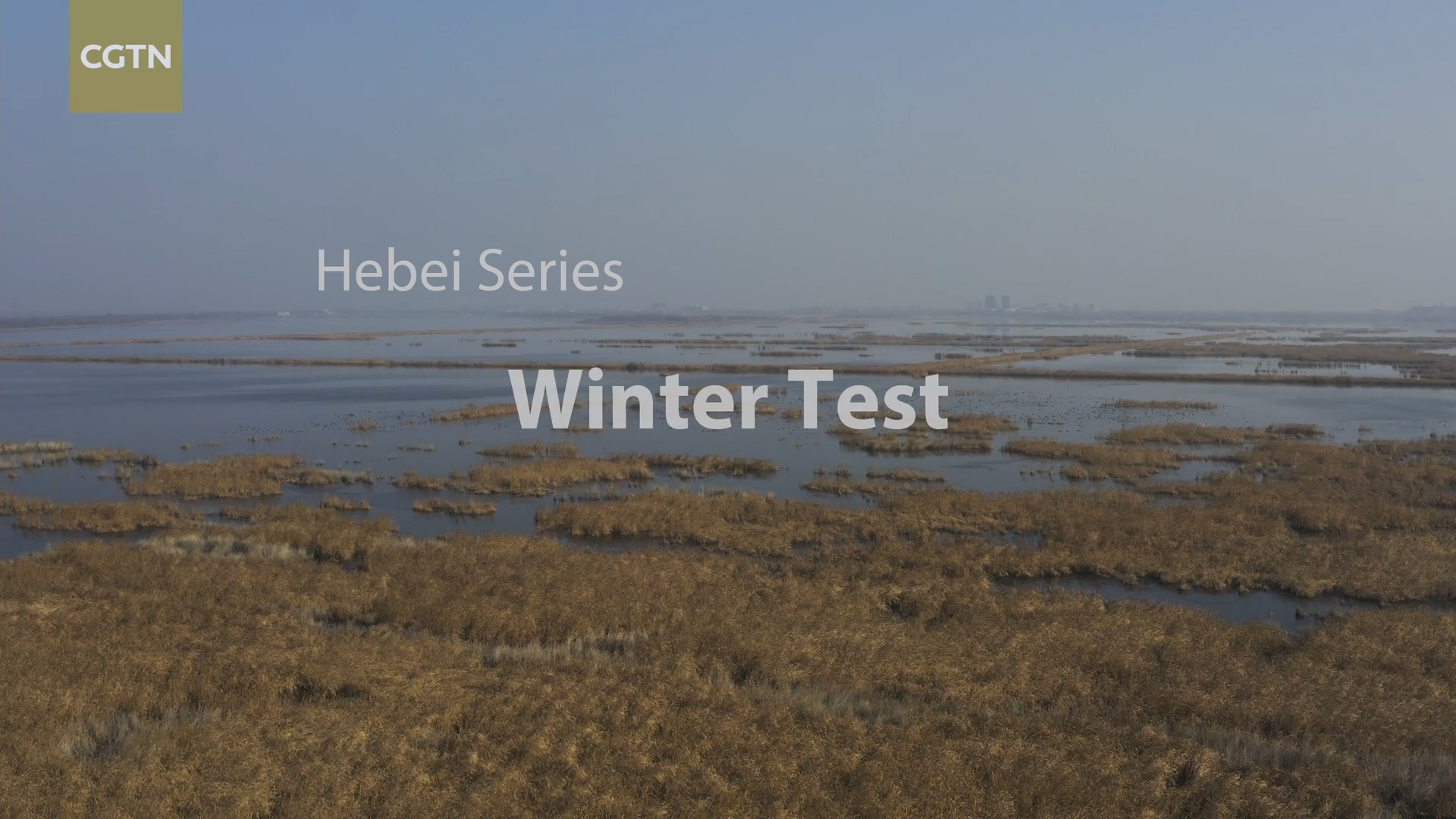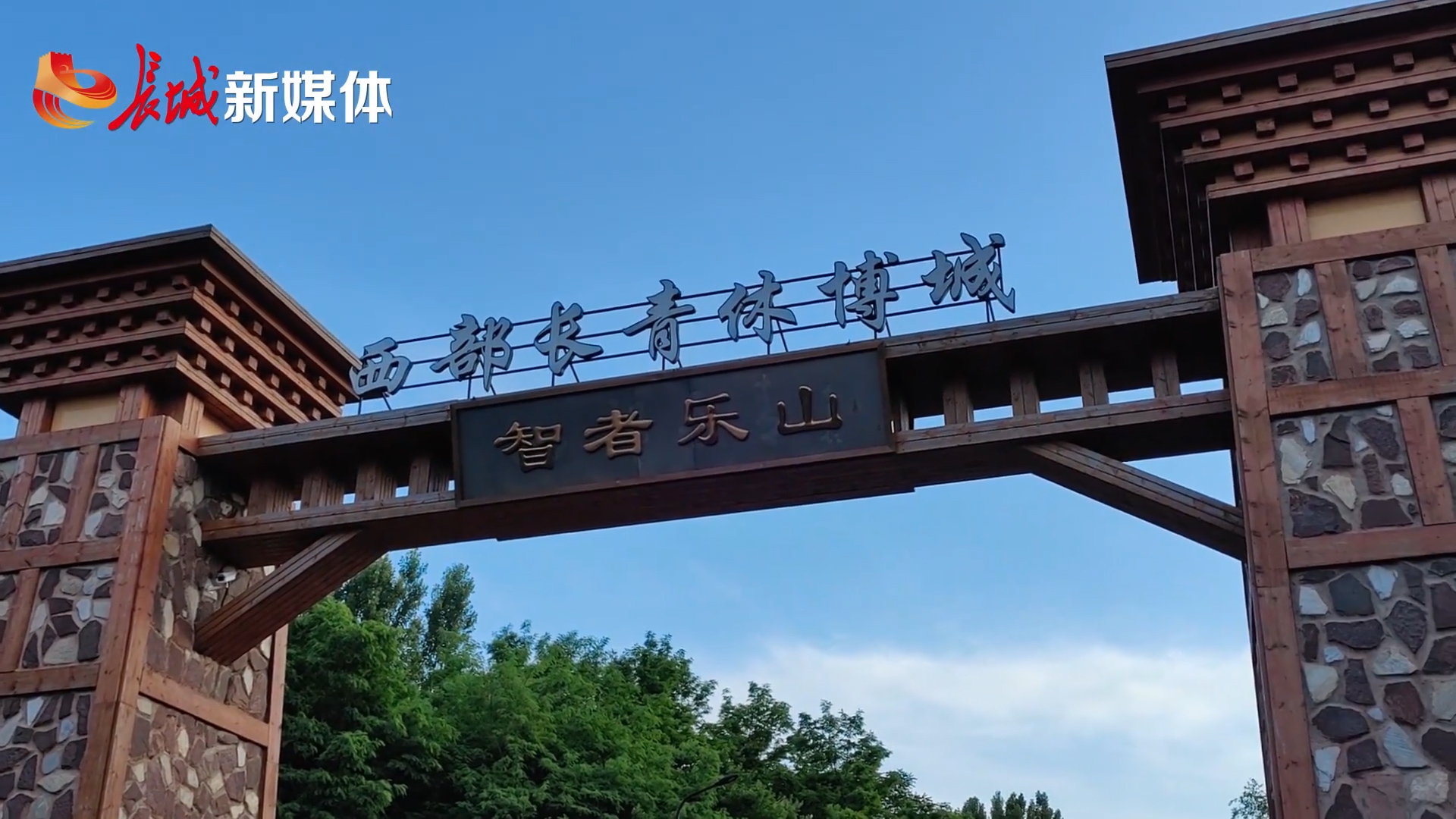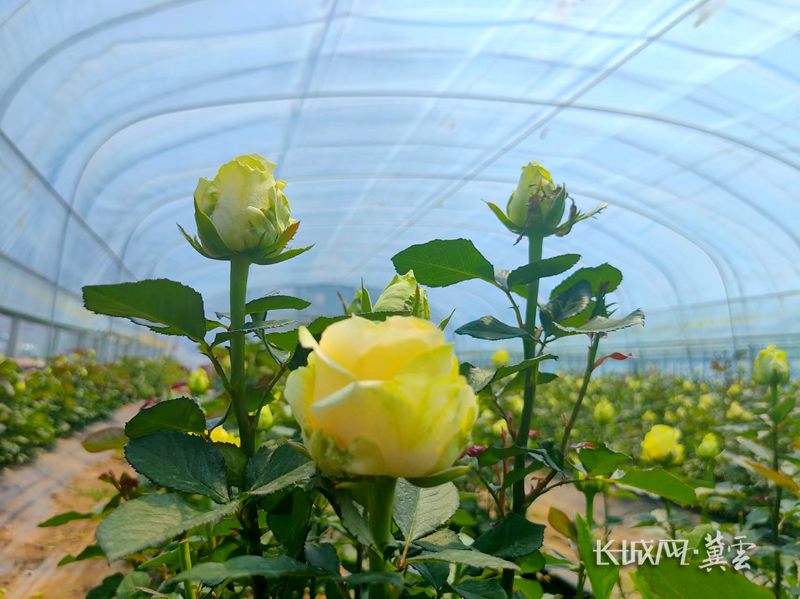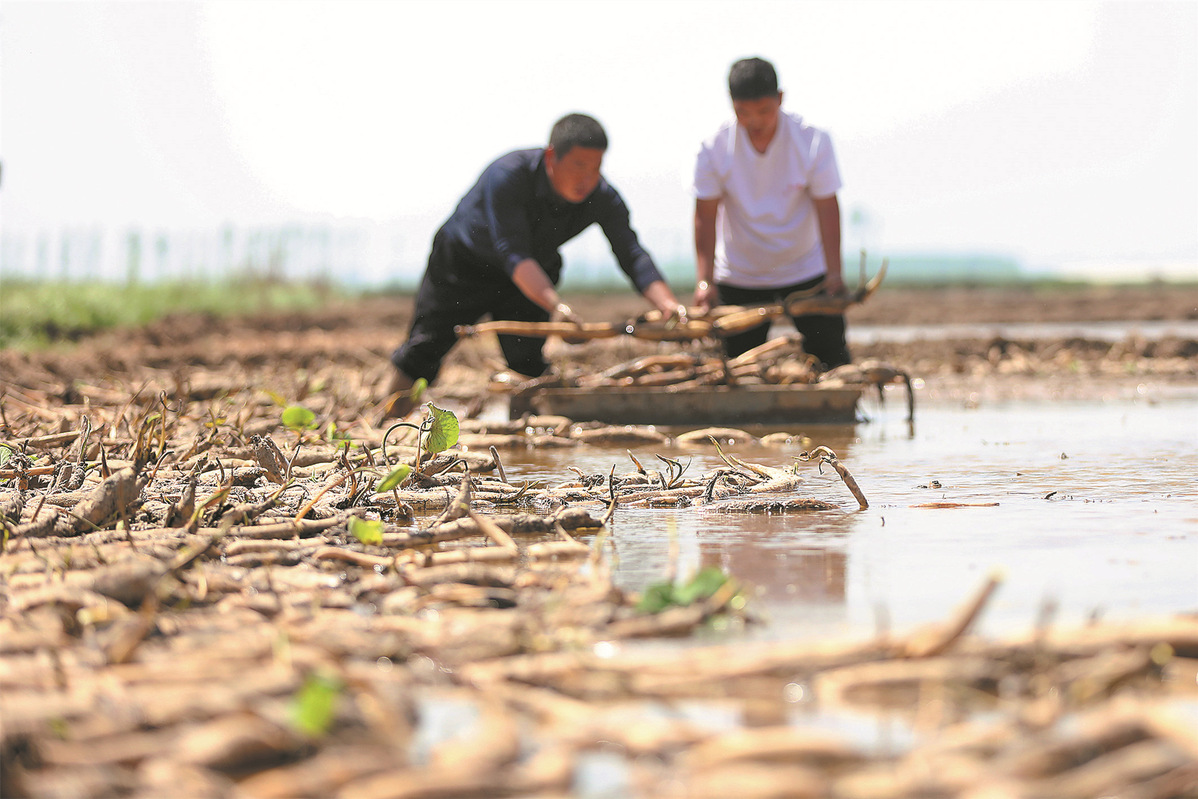
Farmers plant lotus roots in a pond in Zepan village in Xingtai, Hebei province. (Photo provided to China Daily)
Zhang Shengqun has recently finished planting lotus roots across 2 hectares of ponds in Zepan village in Xingtai, Hebei province.
"The beginning of summer is the prime time for planting lotus roots, which are ready to harvest after six or seven months," the 45-year-old said, adding that he expects a yield of 60,000 kilograms in December.
"Over the next few months, we have to take good care of the lotus roots so that they grow well," he said.
There's plenty to be done, including preparing the ponds, planting seedlings, adding fertilizer from time to time, topping up the water levels in the ponds every day and digging up lotus roots once they are ready to harvest.
"It takes patience and skill to dig out a whole root," Zhang said, adding that harvesting the roots is the most challenging part because they might not have grown straight in the soil, and the roots must be harvested whole to sell at a good price.
Lotus roots sell for 20 yuan ($2.80) per kg, while a single root can sell for about 40 to 50 yuan.
"Every year, individual customers and wholesalers line up to buy our lotus roots," Zhang said.
Crisp and of high nutritional value, the lotus roots grown in Zepan earned a national agricultural product of geographical indication in 2012, according to Li Xianguo, a researcher at the county's bureau of agriculture and rural affairs.
Zepan has been growing the roots for 600 years, Li said, adding that during the reign of the Qing Emperor Jiaqing (1796-1820), lotus roots grown in the village were taken as tribute to the imperial palace. Highly prized, the root was then known as the "Zepan Tribute Lotus Root".
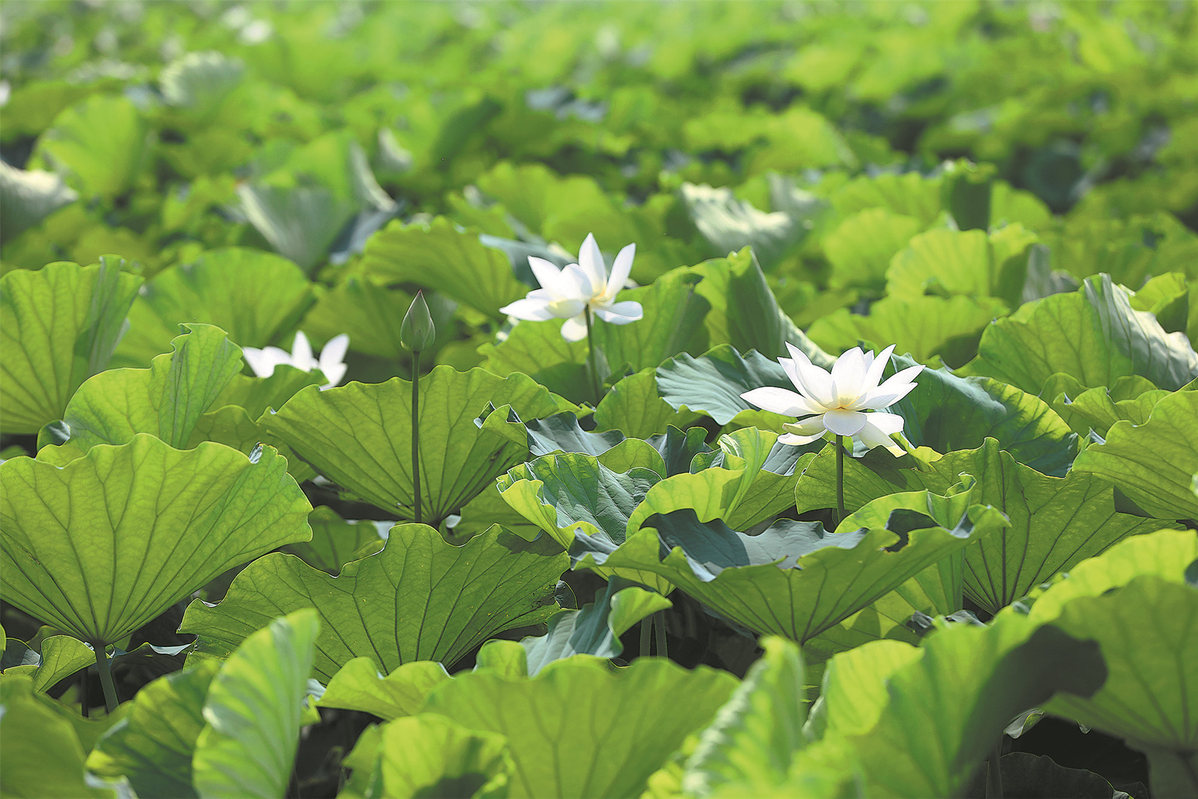
Lotus flowers bloom in a pond in Zepan. (Photo provided to China Daily)
According to historical records, the village was given the name Zepan, or "beside the water area", because it was once next to a lake, giving it a natural advantage in growing lotus roots.
The crop was introduced from Shanxi province during the Ming Dynasty (1368-1644), and since then, generations of villagers have made their living from the root.
Over time, the lake receded, but rather than give up, the villagers dug ponds to plant the roots, a practice that continues today.
"The soil here has always been good for growing lotus roots," Zhang said.
Around 1,500 of Zepan's 5,600 residents are engaged in growing or selling lotus roots.
Collectively, the village grows 33 hectares of lotus roots, yielding up to 750,000 kg of the crop per year, according to village Party chief Wang Shifeng.
Wang said the county is planning processing projects for the roots to make use of every part of the plant, from the lotus "whiskers" to its seeds, nuts and flowers.
"This will help broaden channels for increasing village incomes and assist rural vitalization," Wang said.
Editor: Song Lifang



